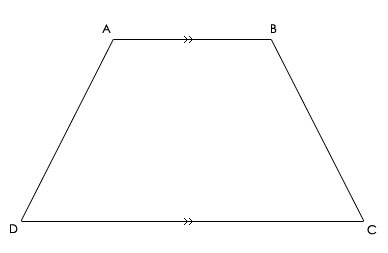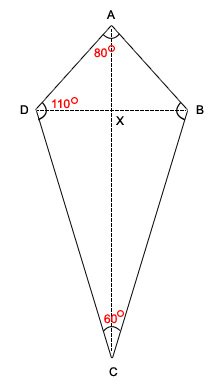
Quadrilaterals
The Basics
A quadrilateral is a two-dimensional closed shape with four straight sides. There are various kinds of quadrilaterals and some of the most common types of quadrilaterals are the parallelograms, the rectangles, the squares, the trapezoids and the rhombuses.
The various types of quadrilaterals are:

In parallelogram opposite sides are parallel and equal in length and opposite angles are equal.

In a rectangle opposite sides are parallel and equal in length. All angles measure 90°.

In a square, opposite sides are parallel and all sides are equal in length. Moreover all the angles measure 90°.

In a Rhombus, all sides are congruent and opposite angles are equal. The diagonals of a rhombus bisect each other at right angles.
Â
Â

In a trapezium or trapezoid, one pair of sides is only parallel.

In a kite, the two pairs of adjacent sides are equal and the diagonal cuts each other at right angles.
More Detail
Though there are different kinds of quadrilaterals, yet there are certain common features, which are given below:
– All quadrilaterals have four sides and are coplanar
– Each quadrilateral must have two diagonals
– The sum of the four interior angles of a quadrilateral is equal to 360 degrees
Despite these similarities, there are differences, which classify different kinds of Quadrilaterals. As soon as we hear the word quadrilateral, we begin to think of a square or a rectangle. Undoubtedly, these are also quadrilaterals; thus on that basis assuming that, all quadrilaterals have parallel sides or equal sides would be incorrect. It is for this reason quadrilaterals like the parallelogram, the rectangle, the square and others are classified as special quadrilaterals.
Examples

Referring to the above figure ABCD, which is a “kite” and considering AC and DB as diagonals, which meet at point X, we can say:
 AXD = 90°
AXD = 90°
 ABC = 360° – (110° + 80° + 60°) = 110°
ABC = 360° – (110° + 80° + 60°) = 110°
DC = BC and AD = AB

Referring to the above figure KLMN, which is a parallelogram, we can say:
 KNM = 60° (As KL is parallel to NM and
KNM = 60° (As KL is parallel to NM and  LKN and
LKN and  KNM are interior angles. The summation of Interior angles is always equal to 180°)
KNM are interior angles. The summation of Interior angles is always equal to 180°)
Similarly,  NML = 120° (as
NML = 120° (as  KNM +
KNM +  NML = 180°)
NML = 180°)
Thus,  KLM = 360° – (
KLM = 360° – (  KNM +
KNM +  NML+
NML+  LKN)
LKN)
= 360° – (60° + 120° + 120°) As the sum of all angles of a quadrilateral is 360°
= 360° – 300°
= 60°
Test your knowledge – try our Quadrilaterals Test.



